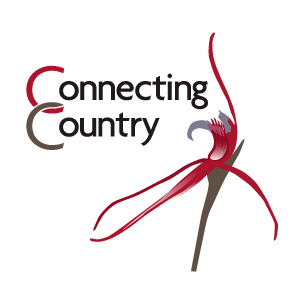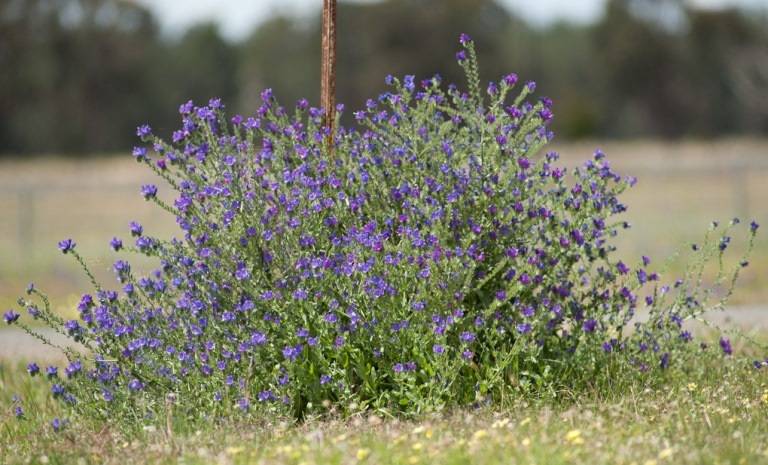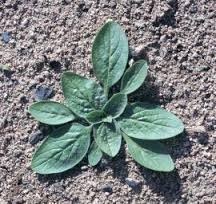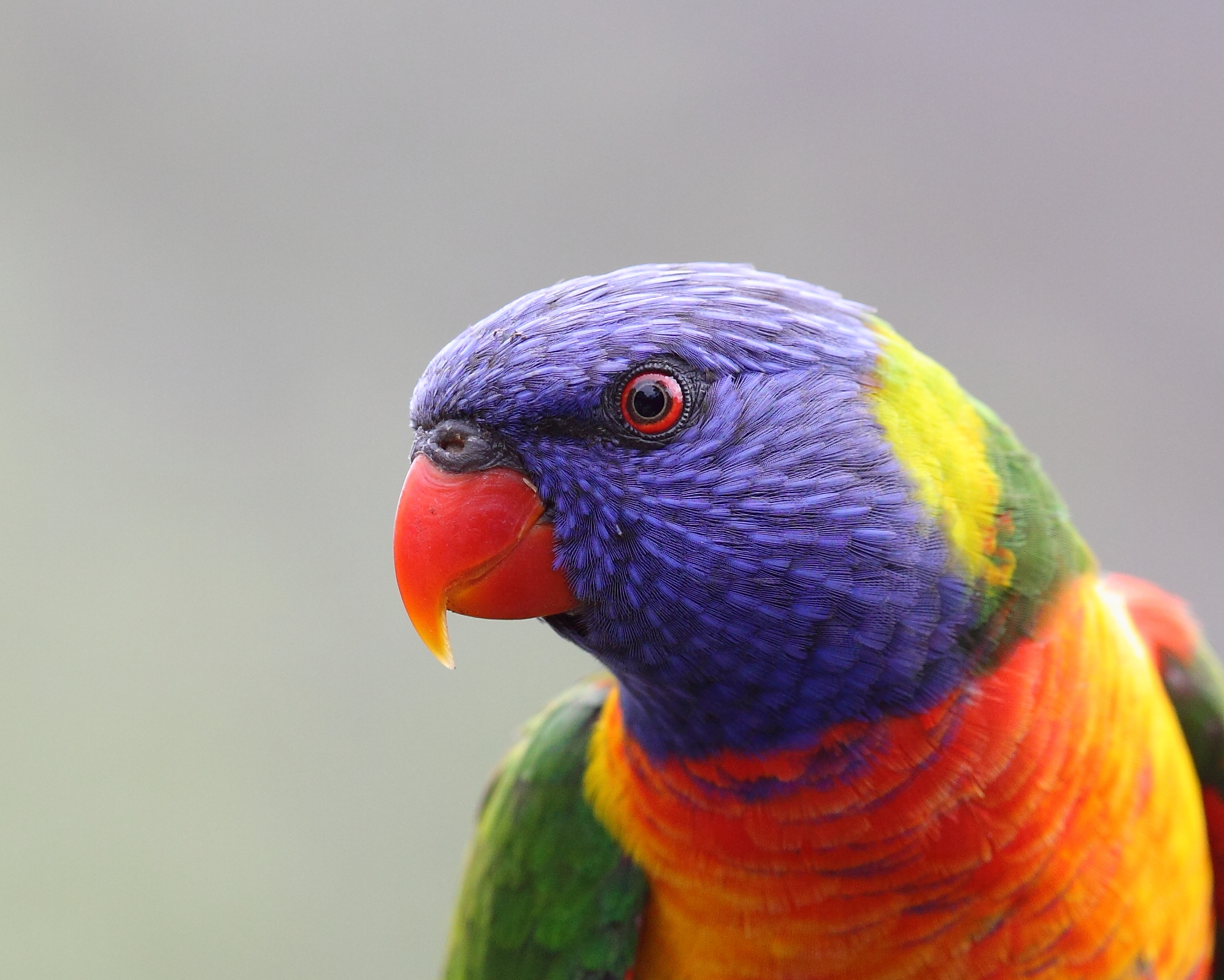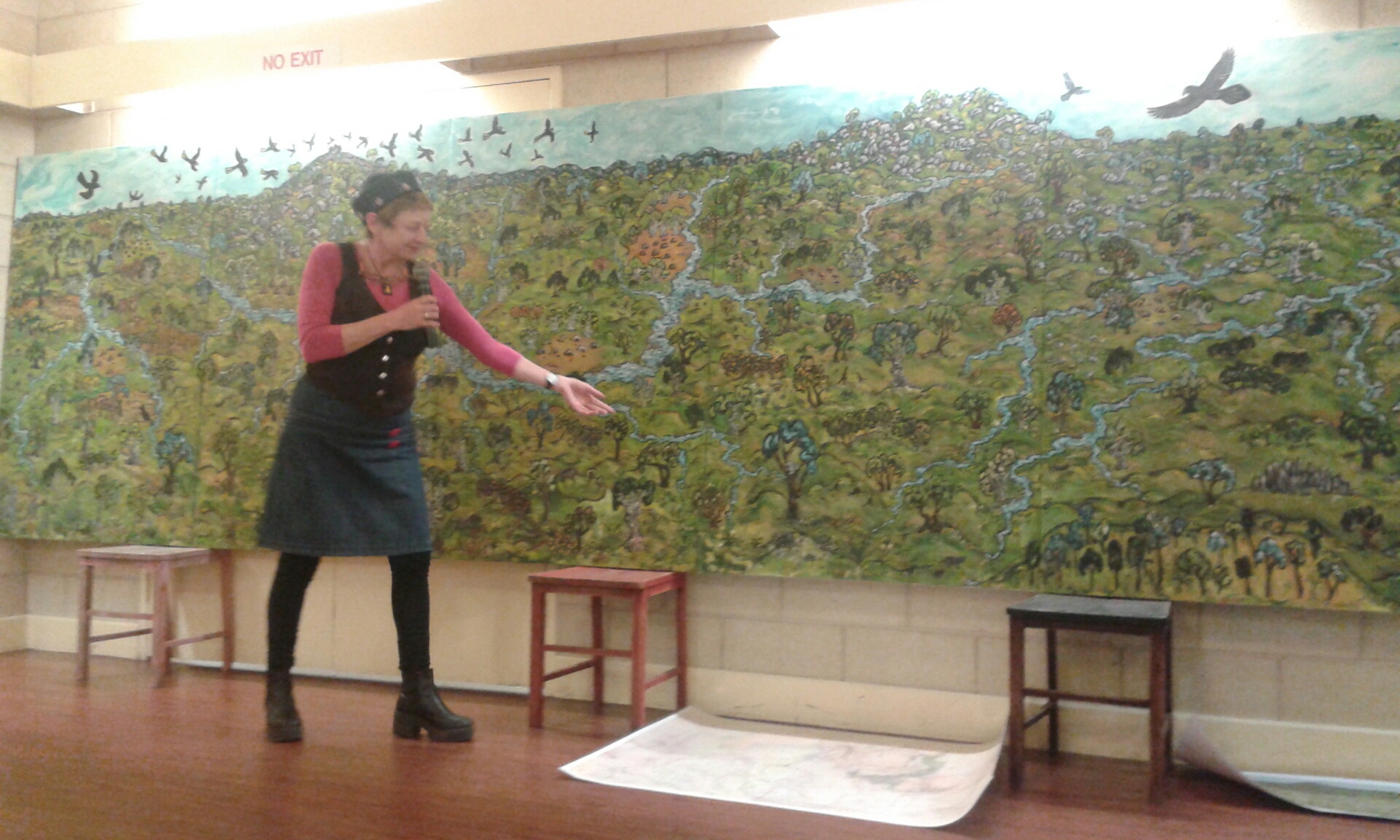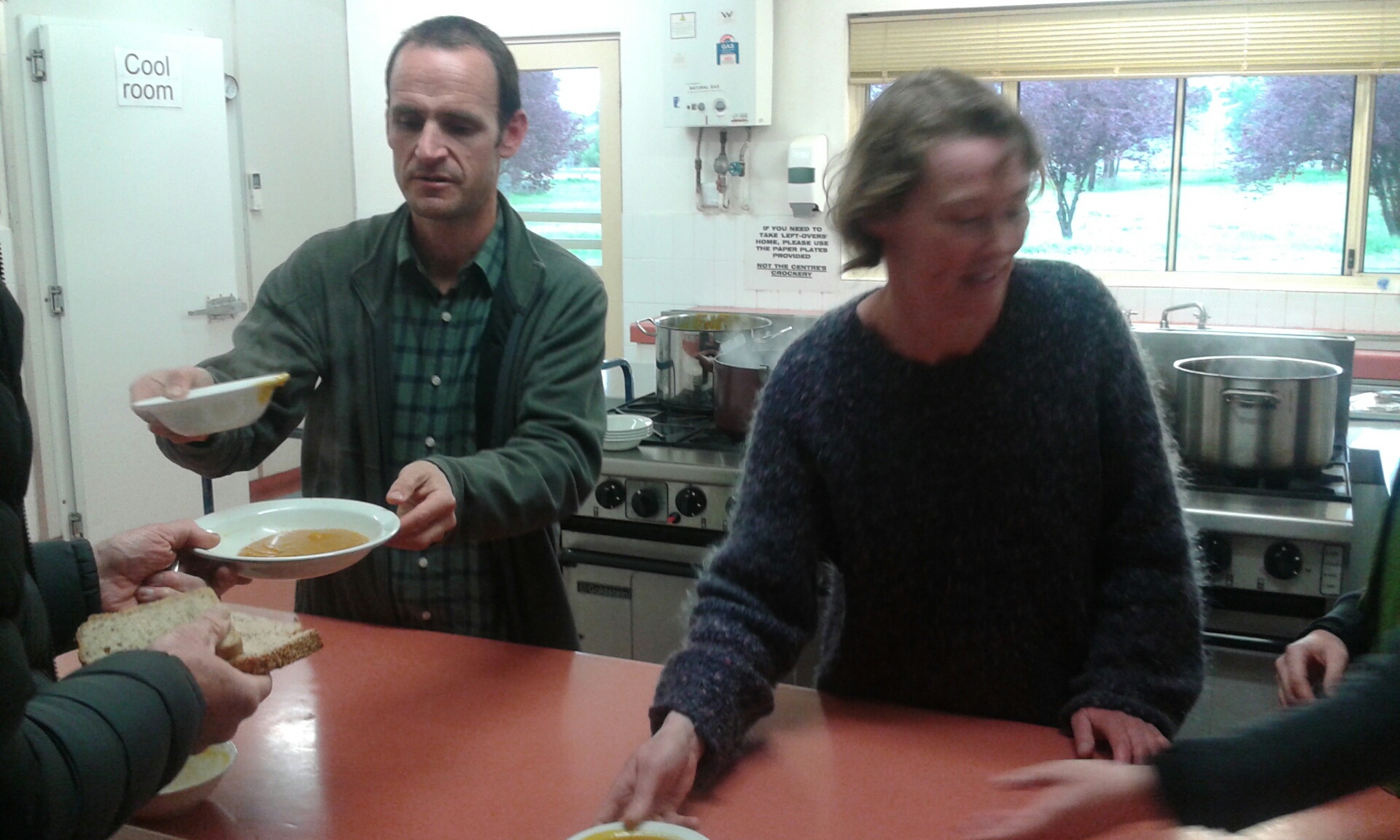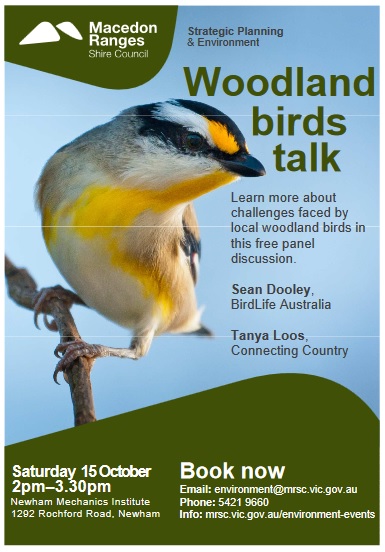Paterson’s Curse – pretty but a problem
Posted on 24 October, 2016 by Connecting Country
While out in the field Connecting Country staff, Bonnie Humphreys and Jarrod Coote, have noticed a number of out-breaks of Paterson’s Curse in our region. This weed is easily recognisable at the moment by the swathes of purple flowers. Yes it’s pretty, but it’s also a potentially big problem.
Paterson’s curse is a winter annual herb that often becomes the dominant species in pastures. It is a prolific seeder that can produce more than 5000 seeds per plant per year. Large quantities of seeds may accumulate in the soil over several years. For example, a seed bank of up to 30 000 seeds per square metre has been reported. Seeds may remain dormant in the soil for up to five years.
Paterson’s curse is considered a weed because:
- It reduces pasture productivity and is toxic to livestock.
- It can degrade the natural environment, compromising habitat values by crowding out and suppressing native vegetation.
- Hay and grain infested with it fetch lower prices.
- It affects human health. Some people are allergic to the pollen and the rough hairy texture of the leaves and stems causes skin irritation in people having close contact with the plant.
The life cycle of Paterson’s curse is important to understand in managing infestations. Currently plants are flowering and set seed from the top of the stem down. The plant then dies back and seeds germinate in the residual bare ground. As the plant grows it forms a rosette and then sends up the flowering stem.
So right now, the best thing to do is to map infestations and chip or spray emerging rosettes in Autumn next year. Rosettes can be easily chipped out and turned upside down to dry in the sun or sprayed with a registered herbicide.
For more information from the Agriculture Victoria website, click here.
Connecting Country Supporter Survey Results are in!
Posted on 24 October, 2016 by Connecting Country
 A big thank-you to all of the people who responded to our supporter survey. We appreciate the time taken to fill out this survey. These responses are helping us to shape our direction into the future.
A big thank-you to all of the people who responded to our supporter survey. We appreciate the time taken to fill out this survey. These responses are helping us to shape our direction into the future.
Some interesting results (please note that there were 58 responses in total) include…
- Around half live in town or on less than 5 acre block (25)
- 76% are involved in landcare
- Ranking of our work (note that all facets were rated roughly even): 1. On-ground action, 2. Community engagement and education, 3. Monitoring, 4. Landcare support
- Top priorities for action: Habitat enhancement for local birds and other native species, Development of wildlife corridors, Environmental education, Vegetation management and restoration
- Lower priorities for action: Sustainable agriculture, Understanding fire ecology and impacts, Pest plant and animal control
- Preferred funding options: Government grants, Philanthropic organisations, Donations/Bequests
- Some encouraging comments:
- Keep up the great work!!
- You provide a vital connection for landcare groups and help with educating communities.
- I’m sure people would be prepared to pay for the field days and workshops, especially when lunch is provided too. Thank you for all the wonderful work you do.
- As an out-of-towner, I am inspired by your organisation. Keep up the good work.
- Keep up the great work, your input into the community really pays off.
- I like the way CC connects different networks, I am exceeding grateful for the work CC has undertaken on my property. It has given me an enormous boost.
- Although I am a city dweller, Connecting Country is becoming more important to me. I’m sure more city dwellers would become involved in CC activities if they were aware of the programme.
- You’ve all been doing a fantastic and wonderful job!!
- Thank you for the work that you already do.
- Thank you – wonderful team and great initiatives.
- The educational programs provided by CC have enhanced my understanding of the biodiversity of our local area and heightened my interest to find out more. Thankyou CC.
To view the full summary please click here .
Connecting Country is showing off!
Posted on 21 October, 2016 by Connecting Country
Come show your support for Connecting Country and have some fun as we head down Barker St in our high vis and workboots on. Connecting Country is running a float in this year’s Castlemaine Show parade on Friday 28th October 2016. We’d love it if you joined us to walk proudly down the street and celebrate our volunteers involved in Connecting Country.
We will be hooking the direct seeder up to our red ute and handing out acacia seeds for people to grow into habitat for local woodland birds. This fun event will be a great way to show what we do and who we do it with in the Castlemaine district.
We would love you to be involved! Contact Naomi by email at naomi@connectingcountry.org.au or call 5472 1594. Look forward to seeing you there!
Celebrating 1000 Connecting Country blog posts!
Posted on 20 October, 2016 by Connecting Country
On the 1st August 2009 Connecting Country posted our first blog post and since then has shared, reported, updated and informed 1000 times and we’d like to celebrate! Our blog posts are a way for people to stay in touch with us and the happenings in the broader community. Topics range from upcoming events, launching information materials, summaries of events that have happened and observations from nature. There are currently 404 blog subscribers, and people can also view these blog posts by clicking on topics on our homepage.
Some of our favorite and popular blog posts have been:
- Nestboxes, Phascogales and Gliders
- Now is the time for rabbit control
- Local Climate Change Action
- Farewell to a comrade on Muckleford Creek
Our earliest blog author was Bronwyn Silver who helped with our website until 2015. Bron’s fabulous work largely accounts for the number of blogs to date. Chris Timewell has also been a big contributor over the years. Krista Patterson-Majoor, Tanya Loos, Naomi Raftery, Asha Bannon, Janet Barker and Max Schlachter have also contributed as part of their roles at Connecting Country. Thanks to all for your effort in helping to maintain this part of our communications.
If you’d like to broadcast news about an event on our website or facebook page, contact Naomi at naomi@connectingcountry.org.au. In the meantime, enjoy this little trip down memory land – a selection of some of our favorite pics and people from over the years….
19 October – Water Rats event – have you seen one or want to know more?
Posted on 19 October, 2016 by Connecting Country
The Bendigo Creek Platypus Project in partnership with the North Central Catchment Management Authority and the Waterwatch program are excited to extend an invitation to attend the upcoming Water Rat community information evening to be held on Wednesday 19 October 2016 at Bendigo Tafe, Charleston Road Campus.
While Geoff Williams from the Australian Platypus Conservancy is in town, he is trying to gather information about the Water Rat with a focus on current distribution.
If you have seen and know where there are Water Rats in our region, it would be great if you can please fill in the Water Rat Survey form, and return to our regional Waterwatch coordinator Cass Davis at cass.davis@nccma.vic.gov.au by Tuesday 18th October 2016. Cass will then pass them on to Geoff so he can include your information in his research.
Celebrate Bird Week and the Aussie Backyard Bird Count
Posted on 18 October, 2016 by Tanya Loos
From 17-23 October 2016, thousands of people from across the country are heading out into their backyards, local parks or favourite open spaces to take part in the third annual Aussie Backyard Bird Count!
On Saturday, October 15 2016, Connecting Country’s Woodland Bird Project Coordinator Tanya Loos and BirdLife Australia’s Sean Dooley kicked off Bird Week and the Aussie Backyard Bird Count with a joint presentation in the Macedon Ranges .
 Sean spoke passionately about growing up with birds in the Melbourne suburbs of Seaford, and his love for imperiled woodland birds such as the Grey-crowned babbler. He showed us how simple bird surveys conducted by citizen scientists all over Australia have enabled some alarming trends to be picked up – such as the decline of Laughing Kookaburras which are down some 40% in recent years.
Sean spoke passionately about growing up with birds in the Melbourne suburbs of Seaford, and his love for imperiled woodland birds such as the Grey-crowned babbler. He showed us how simple bird surveys conducted by citizen scientists all over Australia have enabled some alarming trends to be picked up – such as the decline of Laughing Kookaburras which are down some 40% in recent years.
Tanya then followed with an overview of the extensive on ground works program of Connecting Country, and how this work will help woodland birds and in particular the feathered five. She shared some exciting graphics which show the results of the citizen science program in the area – in particular for the Diamond Firetail and Brown Treecreeper. (Coming soon!)
Sean then took us outside and we used the Aussie Backyard Bird Count app to do a simple twenty minute survey, the highlight of which was a Sacred Kingfisher sitting on a little gate above a dam next to the Newham Mechanics Institute. The app is so easy to use! For those without a smart phone – the website is also very simple and really aesthetically pleasing.
To get involved all you need is 20 minutes, your ‘green patch’ of choice, and some keen eyesight (or binoculars!) And it doesn’t matter if you’re a novice or an expert—we’ll be there to help you out along the way! Simply record the birds you know and look up those you don’t on our ‘Aussie Bird Count’ app or the website. You’ll instantly see live statistics and information on how many people are taking part near you and the number of birds and species counted not just across your neighbourhood but the whole of Australia!
Not only will you get to know your feathered neighbours, but you’ll be contributing to a vital pool of information from across the nation that will help us see how Australian birds are faring. Check out the results from the 2015 Aussie Backyard Bird Count here.
Any questions about the Aussie Backyard Bird Count? Get in touch with Tanya at the Connecting Country office at tanya@connectingcountry.org.au
Thursday 20th October 2016 – Newstead Landcare’s AGM and fire presentation
Posted on 17 October, 2016 by Connecting Country
As the days warm up and the summer approaches, the thoughts of many who live out of town turn to the threat of bushfires. The things that we love about the bush can become sources of anxiety and fear in the hot, dry months. How do we protect ourselves from bushfire and still protect the plants and animals that make our area so special? Questions like these will be addressed at Newstead Landcare Group’s October presentation “Protecting from Bushfire, Protecting our Biodiversity” on Thursday the 20th of October 2016 at the Newstead Town Hall.
“We are really excited to have Owen Gooding, a leading researcher on vegetation management and fire presenting at our October meeting. Owen is also the Vegetation Management Officer for the CFA, so he is very well placed to help us understand the issues” said Frances Cincotta, Newstead Landcare’s President.
The presentation will cover how to manage vegetation on your property, be it a small holding or larger bush block, to reduce the risk in case of fire and to retain native vegetation. “Owen will also be discussing ways to think about bushfire and native vegetation in the wider landscape and dispelling a few myths” Ms Cincotta added.
This presentation ties in with another important event about bushfire for residents of the Newstead and Maldon areas. Understanding Fire in our Landscape: A Community Conversation is a community event being held on the weekend of the 12-13 November 2016, in Newstead. For more details about this event; click here.
“In this Community Conversation fire in the Newstead-Maldon landscape will be discussed in detail – the history of fire, local ecology, and fire risk” said Chris Johnston, one of the organisers of the event. “There will be talks, displays, biodiversity walks, visits to the sites of past fires, and a chance to record your memories of local fires.” Supported by community and external experts, the weekend will be a chance to learn more and share ideas across our local communities about living with fire.
For more information or to book for this free event go to talkingfire.org or to the Facebook page Talking Fire.
Understanding Fire in our Landscape is supported by the Mount Alexander Shire Council 2016 Community Grants Program, Maldon & District Community Bank and the Norman Wettenhall Foundation.
Talking Fire – Maldon, Newstead and places in between
Posted on 17 October, 2016 by Connecting Country
Join a conversation to better understand fire in our local landscape at the Newstead Community Centre over the weekend of 12 and 13 November 2016. ‘Talking Fire’ will discuss what fire means for our local communities and the environment.
 The aim of these workshops is to bring local expertise and knowledge together with outside experts in the field of fire behaviour and fire ecology, so that the community can talk about and better understand, plan for, and live with fire.
The aim of these workshops is to bring local expertise and knowledge together with outside experts in the field of fire behaviour and fire ecology, so that the community can talk about and better understand, plan for, and live with fire.
Some of the questions driving the conversation will be:
- What is the history of fire in our area?
- How have the landscape, community & fire policies changed?
- How can we protect what we value?
- How can we respond to fire risk, now & in the future?
You may have other questions, ideas or solutions.
‘Talking Fire’ are also seeking local knowledge and stories at this workshop. Do you have a “fire experience”, direct or indirect, to share? As a part of the weekend Gordon Dowell will be recording the stories and histories of locals. The Newstead CFA Auxiliary are among those we will be keen to hear from.
They hope that from the weekend our local landscape can be seen anew, through the eyes of scientists, fire experts and long lived locals alike, and through a wider, “landscape lens”, not just from a household or property viewpoint.
Whether you live in Newstead or Maldon town, or the bush and farmland surrounds, you’re invited along to ‘talk fire’. Come to any or all sessions. The event is free, but we need bookings to help our caterers, the Newstead Preschool and Mens’ Shed, provide enough for all.
Thanks to Mount Alexander Shire, Maldon & District Community Bank and Norman Wettenhall Foundation for supporting the event. Many more supporters are contributing in non-financial ways. See our website www.talkingfire.org for more information and to book.
Connecting Country’s 2016 AGM and Annual Report
Posted on 14 October, 2016 by Connecting Country
We were thrilled with the strong turn out and great atmosphere for our 2016 Annual General Meeting on Tuesday the 11th of October 2016 at the Campbells Creek Community Centre. We are also excited to share our 2015-16 Annual Report. We are proud of our achievements in the past year, and this report provides an opportunity for us to celebrate them with our supporters. In the spirit of mindful resource use, we would encourage you to view the report in a digital format by clicking on the cover below. Huge thanks to Eliza Tree for the use of her painting titled Jarra Country on the cover and for bringing it along to the AGM for viewing.
The general business part of the AGM saw the election of our volunteer Committee of Management members. Brendan Sydes was re-elected as president, Deb Wardle – Vice President, Marie Jones – Treasurer, Jenni Thomas – Secretary. Max Kay, Malcolm Trainor, and Saide Gray return as general committee members.
Following a light meal, we heard from six local experts about their vision for the Mount Alexander region. Kath Coff gave an indigenous perspective, Ian Higgins spoke about vegetation management, Beth Mellick gave an insight into the history of Connecting Country and our relationship with the Norman Wettenhall Foundation, Paul Foreman spoke about keeping water in the landscape, Carla Meurs shared the benefits of vegetation for wildlife on her farm and Geoff Park talked about, you guessed it, birds!
We all then broke into working groups according to their area of interest and discussed how Connecting Country could achieve their vision. Connecting Country staff and committee now have the task of collating all the feedback from the night and our supporter survey and deciding on our future directions. A huge thank-you to everyone who attended and gave their time, energy and ideas. We really appreciate the feedback and support from attendees and our community in general. We will be provide regular updates as we progress through this process.
If you missed out on our AGM, Connecting Country is encouraging people to be involved in shaping our future direction by filling out our Supporter Survey. To participate, please CLICK HERE. There are a relatively small number of questions, and will take approximately 5-10 minutes to complete. This survey will remain open until Sunday the 16th of October 2016. We have had a great response so far and we thank everyone for their very valuable input.
15 October 2016: Tanya heads south to talk birds
Posted on 13 October, 2016 by Connecting Country
Connecting Country supporters from ‘down south’ will be thrilled to hear that Tanya is presenting in Newham from 2 to 3.30 pm on Saturday the 15th of October 2016. She will be speaking alongside Sean Dooley from Birdlife Australia about the challenges faced by local woodland birds. More information in the flyer below.
Castlemaine Diggings National Heritage Park survey – what are your thoughts?
Posted on 13 October, 2016 by Connecting Country
Parks Victoria is currently reviewing the Heritage Action Plan for the Castlemaine Diggings National Heritage Park and Jade Harris from Parks Victoria has asked Connecting Country to share details of their community survey.
Parks Victoria want to know about the places people value within the Castlemaine Diggings National Heritage Park, find out about issues of concern and get your ideas about other themes, stories or aspects of the park that could be shared with visitors.
You can provide your feedback and ideas via an online survey that will remain open until Wednesday 30th November 2016.
Please fill out the survey here: https://www.surveymonkey.com/r/CastlemaineDiggings. It should take approximately 10 minutes to complete.
The results of the survey will provide baseline data for Parks Victoria to identify strengths and gaps in our current themes, stories and practices in relation to the Castlemaine Diggings National Heritage Park. It will also enable us to report on improvements, achievements and initiatives and better plan for the future of the park to enhance visitor’s experiences.
Note: The survey is conducted by Context and information is treated confidentially. The survey does not seek to collect personal information or identify any individual, although if you want to be kept informed about planning for the future of this park, you can leave your contact details at the end of the survey.
FTLA Newsletter – October 2016
Posted on 13 October, 2016 by Asha
Susi Johnson from the Farm Tree and Landcare Association (FTLA) recently sent us an email with updates on membership and insurance renewals, as well as information on upcoming events, activities and grant opportunities. We’ve turned her email into a PDF for our members and Landcare groups who are interested in having a read (CLICK HERE).

8 Nov 2016 – Landowners looking after Grasslands Workshop
Posted on 12 October, 2016 by Connecting Country
 The Landowners looking after Grasslands – Field Day on the Plains has been rescheduled to Tuesday November 8th 2016, 10.00am to 2.30pm because of the wet roads.
The Landowners looking after Grasslands – Field Day on the Plains has been rescheduled to Tuesday November 8th 2016, 10.00am to 2.30pm because of the wet roads.
Join the Northern Plains Conservation Management Network, Trust for Nature and Dr David Baker-Gabb, renowned expert on Plains-wanderer, in launching Managing Native Grasslands for Plains Wanderers Field Guide. Hear from Dan Harley, Threatened Species Biologist with Zoos Victoria, about their Fighting Extinction Programme and the plan to start captive-breeding Plains-wanderers in 2017. Accompany Paul Foreman, grassland ecologist for a walk across Andy & Judy McGillivray’s property, and learn how to survey for threatened grassland flora species such as the nationally listed Swainson-peas.
 WHEN: Tuesday November 8th 2016, 10.00am to 2.30pm
WHEN: Tuesday November 8th 2016, 10.00am to 2.30pm
WHERE: Andy & Judy McGillivray’s, McIntyre Rd, off Roslynmead Rd, Torrumbarry. Vic Roads Reference: 30J2 & 31A2 .
Morning tea, lunch & afternoon tea will be provided. Please wear sturdy walking shoes, bring a camp chair, sunhat, binoculars, warm coat, sunscreen and a bottle of water.
RSVP is essential to the North Central CMA by 5 pm Thursday 3rd November on (03) 5448 7124 or email info@nccma.vic.gov.au
Please poster here for location details.
October 2016 edition North Central Chat
Posted on 12 October, 2016 by Connecting Country
 Our Regional Landcare Coordinator, Tess Grieves sent through a link to the October 2016 edition of the North Central Chat to share. Inside you’ll find plenty of great news stories and courses coming up which may be of interest. CLICK HERE to view the newsletter.
Our Regional Landcare Coordinator, Tess Grieves sent through a link to the October 2016 edition of the North Central Chat to share. Inside you’ll find plenty of great news stories and courses coming up which may be of interest. CLICK HERE to view the newsletter.
Also see the 30 years of Landcare celebration event invitation HERE for those of you that may not have a copy yet. If you’re joining in the celebrations, please get your RSVP’s in to the North Central CMA: info@nccma.vic.gov.au or call (03) 5448 7124
Little Habitat Heroes – proudly supported by Connecting Country
Posted on 11 October, 2016 by Connecting Country
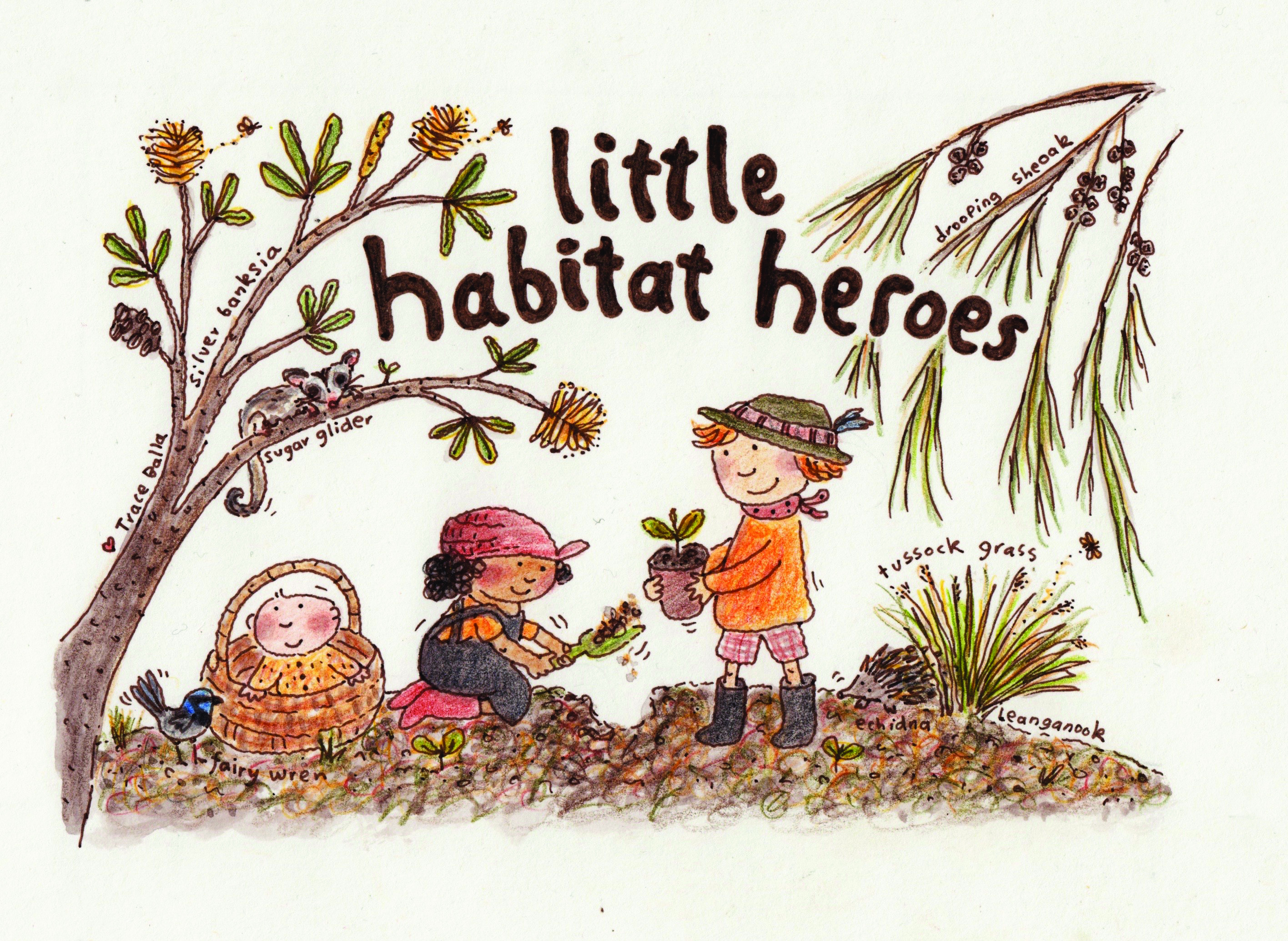 Connecting Country are very proud to be supporting the Little Habitat Heroes project. The plan is to regenerate a 10 hectare site of the East side of Leanganook (Mt Alexander). The invitation is open for all interested children to participate in the campaign and become ‘little habitat heroes’. By mid-November 2016 they hope to raise enough funds to order seedlings that will propagate in time for a planting day in winter 2017
Connecting Country are very proud to be supporting the Little Habitat Heroes project. The plan is to regenerate a 10 hectare site of the East side of Leanganook (Mt Alexander). The invitation is open for all interested children to participate in the campaign and become ‘little habitat heroes’. By mid-November 2016 they hope to raise enough funds to order seedlings that will propagate in time for a planting day in winter 2017
This project was born by a group of new mums who met at a Mothers Group in Castlemaine in early 2016. They shared an dream to create something unique for their babies’ first birthdays and wanted to contribute to the restoration of the local environment and give their children the gift of a personal connection with nature.
Visit: www.littlehabitatheroes.org, or their facebook page or donate via Give Now.
The inspiring mums at Little Habitat Heroes are also working with local artists, Harcourt Landcare Group and Parks Victoria to make this great community project happen for our future nature lovers.
14 Oct 2016 – Birding in the Top End
Posted on 11 October, 2016 by Connecting Country
The tropical north of Australia has some of the most amazing landscapes and birdwatching of anywhere in the world. For the October general meeting of the Castlemaine Field Naturalists Club, club member Peter Turner will talk about his recent adventures to this area (with input from Rosemary Turner, Cheryl Taylor and Ron Wescott).
Peter writes “We had never managed to get to Darwin or Kakadu, so joining a…..Top End Birding tour for 2016 was a way to see the birds of the region with experienced guides, and to get an introduction to the landscapes and plants. Some months after booking, we found that CFNC members Cheryl Taylor and Ron Wescott had booked, too. So 4 of the 6 participants were from Castlemaine!
The talk will focus on some of the best birds and the range of landscapes we saw over the nine days of the first part of the tour, after which Rosemary and I visited Nitmiluk (Katherine Gorge) before returning to Darwin. Cheryl and Ron have provided notes on the highlights of the second part, across from Katherine to Kununurra, with a flying visit to the Mitchell Falls.”
The talk is on Friday 14 October, commencing from 7.30pm. As per usual, it is being held in the Fellowship Room, in the hall behind the Uniting Church, Lyttleton St, Castlemaine (next door to the Art Gallery & Museum). Both members and visitors are welcome to attend. No cost for entry, and no RSVPs are required.
Creating Wildlife Friendly Gardens – Workshop and Webpage
Posted on 10 October, 2016 by Connecting Country
You can create beauty and habitat in your yard with a wildlife friendly garden. For those interested in habitat restoration but find themselves living in town we have put together a list of useful resources with information about how to build habitat for wildlife into our suburban gardens. Visit our new “Wildlife Friendly Gardens” page of our resources section (click here) for information about attracting wildlife to your garden.
Habitat for animals is possible, even on a very small scale. All photos by Cassia Read
Cassia Read will be showcasing her wildlife friendly garden as part of Connecting Country’s Education Program and the Mount Alexander Sustainable Living Workshop Series on Saturday the 22nd of October 2016 at 10.30am (Please note this as a correction to starting time information published in the Midland Express on October 4th).
This workshop is also advertised as part of the Festival of Open Gardens official program. The Festival is celebrating it’s 25th year and showcases gardens across Castlemaine and district. We especially love the gardens with native species (of course) in the program such as 152 Hargraves St., Winters Flat primary School, and the Newstead Community Garden.
12 Oct 2016 – Additional Spring Wildflower walk
Posted on 10 October, 2016 by Connecting Country
Inspired by the amazing displays across the local bushlands, a fifth Wednesday Spring Wildflower Walk has been added to the program by the Castlemaine Field Naturalists Club this Wednesday afternoon (12 Oct 2016). It will depart from the Octopus building car-park on Duke St (i.e., the U3A building opposite the Castle Motel) at 4pm sharp (so best to get their 5-10 minutes beforehand). The excursion leader will be club member and botanist Richard Piesse. CFNC members and visitors all welcome to attend. No cost, and no RSVPs required. 
Nature News October 2016 – Make it and wildlife will come
Posted on 4 October, 2016 by Connecting Country
For this month’s Nature News, on page 26 in this week’s Midland Express (4th October 2016) local ecologist and garden designer, Cassia Read shares come of her insights from creating a wildlife friendly garden. While Connecting Country encourages you to use locally native plants where possible, Cassia has found that all sorts of flowering plants can provide useful habitat.
Striding around the corner of a friend’s Newstead house today my eyes suddenly met the steady gaze of a Grey Shrike-thrush sitting on her eggs. She’d made her home in a basket nailed to the wall, within arms-reach from where I stood. She wasn’t bothered by comings and goings of her human neighbours.
Thrush’ sing exquisite songs in my own Castlemaine garden. I was instantly inspired to hang baskets around my house to encourage more of these birds.
I am fascinated by the possibilities of gardens that meet both needs of the people and the local birds, lizards and butterflies. In these days of a changing climate, urban gardeners can support a host of local wildlife with food, shelter and water. It just takes some thought and a little time spent pottering in the garden.
In my own garden, I’m not aiming to restore bushland or even to create a picturesque bush garden. I grow fruit, veggies and some nostalgic flowers from my childhood. I welcome cool summer shade from deciduous trees. How do I balance my needs with those of wildlife?
I find comfort and direction in considering the spectrum of home garden styles in Castlemaine, ranging between easy-care concrete and bushland gardens that meld with local Box Ironbark Forest. Wherever a garden is positioned on this pavement-to-bushland spectrum, it can be nudged in a more wildlife friendly direction.
For instance, some grass provides a place for magpies to fossick where a pavement is void of life; old style flowers provide nectar for butterflies while ornamental cultivars bred for show are nectarless; a corner planting of dense shrubs is better for Blue Wrens and Thornbills than a park-like lawn that stretches from house to fence; a dry stone wall provides shelter for hibernating Marble Geckos where cemented walls are pure architecture.
Nudge, nudge, wink, wink…. Make it and wildlife will come.
Gardens with wildlife hum with energy and interest. Spotted Pardalotes dipping in a bird bath and Blue Banded Bees darting amongst the Rosemary flowers bring spontaneous joy. Today I’m planting colourful salvias for my girls to pick and Eastern Spinebills to feed on. Tomorrow I’ll scatter basking rocks for lizards. Not big steps, but nudges in a wildlife direction.
Cassia will be showcasing her garden as part of Connecting Country’s Education Program and the Mount Alexander Sustainable Living Workshop Series on Saturday the 22nd of October at 10.30am (Please note this as a correction to starting time information published in the Midland Express on October 4th).
For more information about attracting wildlife to your garden visit the “Wildlife Friendly Gardens” page of our resources section (click here).
Connecting Country supporter survey – Have your say!
Posted on 3 October, 2016 by Connecting Country
Ahead of our AGM next Tuesday (11th October 2016), Connecting Country is encouraging people to be involved in shaping our future direction by filling out our Supporter Survey. To participate, please CLICK HERE. There are a relatively small number of questions, and will take approximately 5-10 minutes to complete.
To find out more about the AGM, please see our earlier post or see our invitation below.

